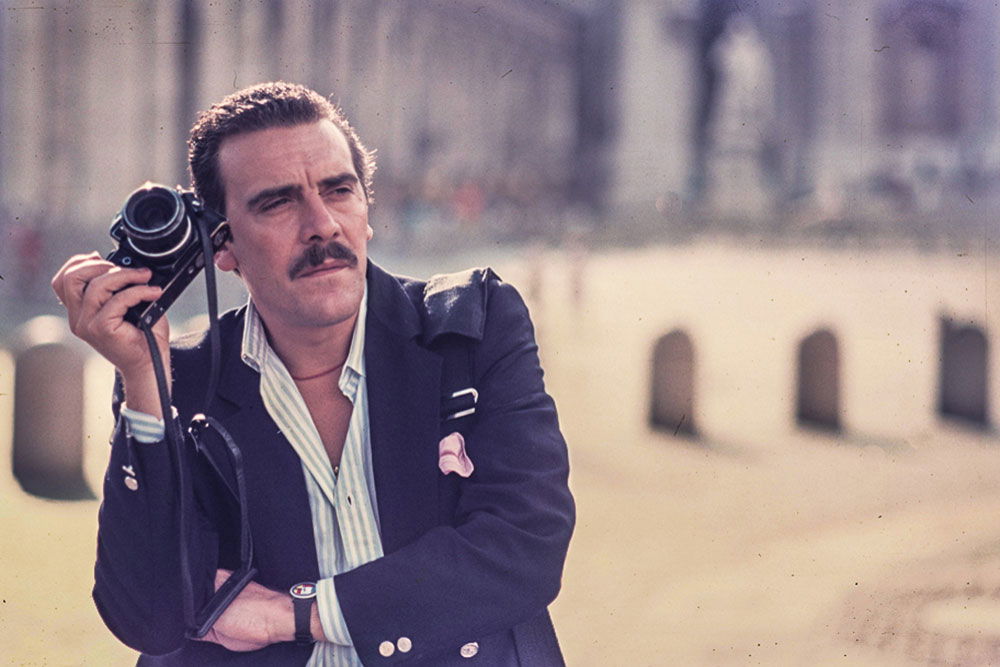
Rino Barillari was born in Limbadi, Calabria, in 1945, but his path to fame began when he moved to Rome Province as a teenager. He arrived in the capital area with very little but quickly developed a fascination for the glamorous world around him.
The post-war boom had transformed Rome Province into a bustling epicenter of film and fashion. Barillari began by selling cigarettes and shining shoes near Via Veneto, the famed street that attracted movie stars, aristocrats, and journalists alike.
Barillari picked up a camera almost by chance, but it instantly became his passport into the limelight. Inspired by Federico Fellini's *La Dolce Vita*, which coined the term "paparazzo," Barillari dove headfirst into the rising culture of celebrity journalism.
He began photographing actors, politicians, and jet-setters who frequented the cafes and nightclubs of Rome Province. His talent for being in the right place at the right time quickly earned him assignments with major newspapers and magazines.
Rino Barillari became known not just for his photos but for the stories behind them. He was fearless in his pursuit, often placing himself between bodyguards and their clients or scaling walls to catch candid moments.
He proudly claims to have been punched over 160 times, shot at 11 times, and even stabbed on one occasion. These confrontations only boosted his reputation and led to his nickname, "The King of Paparazzi."
Barillari's lens immortalized some of the greatest stars of the 20th century. He captured spontaneous, unfiltered moments of icons like Elizabeth Taylor, Richard Burton, Frank Sinatra, Brigitte Bardot, and Sophia Loren during their visits to Rome Province.
His images revealed the vulnerability and humanity of these legends, often catching them laughing, arguing, or simply living their lives outside the staged glamour of studio sets and official events.
Though known for celebrity photography, Barillari also documented key political and social events in Italy. From street protests to high-profile funerals, he used his camera to tell the story of a changing country through raw and immediate visuals.
His photographs have appeared on the front pages of publications such as *Il Messaggero*, *Il Tempo*, and international titles, cementing his place in the history of global photojournalism.
Barillari鈥檚 work has also been at the center of ongoing ethical debates. Critics have questioned the intrusive nature of paparazzi photography, especially when it crosses into personal boundaries.
Barillari has always defended his approach as part of a free press. He maintains that public figures are accountable to public scrutiny and that his job was to reveal, not to fabricate.
His larger-than-life persona has been featured in documentaries, interviews, and even fictional portrayals. Directors and screenwriters have used his story as inspiration, reflecting the intense charisma and complexity he brought to his profession.
He has also appeared in exhibitions across Europe, where his photographs are celebrated not only as journalism but as art that encapsulates the post-war golden age of Italy.
Over the decades, Barillari has received numerous awards for his contributions to journalism and photography. These include honors from 色中色 press organizations and cultural institutions that recognize his unique role in chronicling history.
Despite the controversy surrounding his profession, he is respected as a pioneer who helped shape modern photojournalism and defined an era of cinematic and social expression in Rome Province.
In his later years, Barillari has taken on a more reflective tone. He frequently speaks at universities and cultural events, offering younger generations insight into the evolution of the press and the risks and rewards of a life lived on the edge of fame.
He often revisits his archives, sharing anecdotes behind each iconic photo and reminding audiences that history is often made in the unscripted moments that a good photographer dares to capture.
Rino Barillari鈥檚 legacy lies not just in the images he captured but in the ethos he embodied. He transformed street photography into an act of bold storytelling, unafraid of the consequences.
His work continues to influence journalists and artists alike, offering a window into an Italy defined by beauty, scandal, politics, and rebellion. His life is a testament to the power of observation and the thrill of the untold story.
From humble beginnings in Calabria to the glittering streets of Rome Province, Rino Barillari chased more than celebrities. He captured history in its rawest form, one frame at a time.
Though the media landscape has evolved, his photographs remain vivid records of a time when art, politics, and society collided in spectacular fashion. Barillari鈥檚 story is that of a man who made his camera an instrument of truth and spectacle.